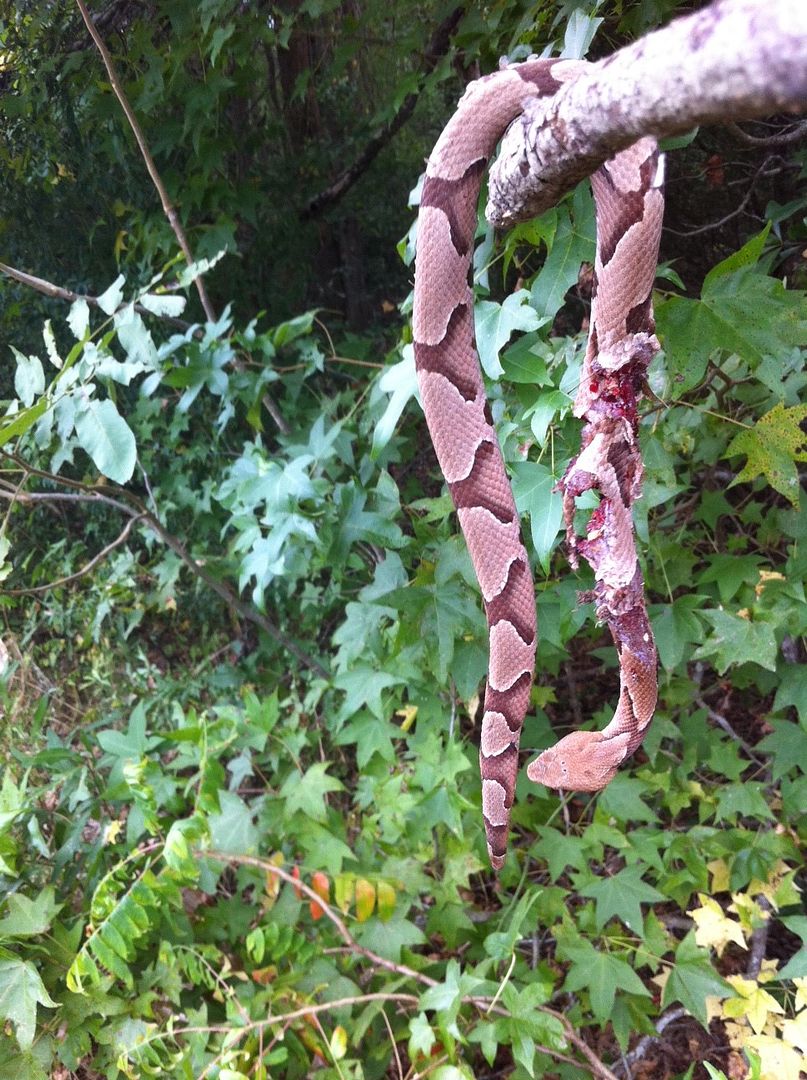AJSully421 wrote:
I swear...
STOP TALKING ABOUT SNAKE PUPILS!!!! STOP IT, STOP IT, STOP IT!!!
At a glance, what shape would you describe this obvious Water Moccasin's pupils as?
Elliptical and dilated.
Do you disagree that all indigenous pit vipers have elliptical pupils? And if they do (they do) that it can be used as a reliable identifying feature? I'm not arguing that it isn't up to the observer to 'correctly' make the distinction.
Next, how about this one? What shape would you describe this shedding Water Moccasin's pupils as??? Go ahead, take a stab at it...
Elliptical, under the 'eye caps' that have formed prior to shedding/molting, that snake is not yet shedding. Your point of course being you can not see the pupils. The answer then is obvious: If you can't see the pupils (for ANY reason) then you can't use that method of identification. That does not make it invalid, just means you'll need to make other observations, yes?
The point is that it is foolish, and even dangerous to say things like "look at the pupils" since people will try and use this supposed info in the field and could get themselves hurt because of it.
The point remains....there are only a couple of reliable methods by which to determine if an indigenous snake (excepting the Coral Snake) is venomous. The pupil shape and the After Tail Scaling. No one is asking or suggesting anyone handle a snake or get too close to it in order to use these methods. If you have any doubt, leave the snake alone.
As was correctly stated, there are only four venomous snakes that are native to North America. Learn to differentiate them at a glance without using stupid stuff like pupils, or insanely unhelpful information like what their anal vent looks like.
This will work fine for the Coral Snake, it is so distinct from all the other indigenous venomous snakes that it is not a problem. The Coral snake could be easily confused with certain other non-venomous snakes with similar colors (but different patterns), but not with the three Pit Vipers we have in the U.S.
Rattlesnakes...of which there are quite a few subspecies are generally easy to I.D. as well. Provided you can see the tail and that the snake has rattles intact. The pygmy rattler being an exception, because of its small size and diminutive rattles, but any mature rattler...most folks will correctly I.D.
The Copperhead (with its five subspecies) is usually pretty easy to I.D. so I would agree that general physical attributes (length, color, pattern, head shape) make it an easy snake to learn.
But when we come to the Water-moccasin/Cottonmouth all bets are off. A juvenile Moccasin will often look nothing like a mature individual in either color, markings or size. There are a plethora of non-venomous snakes with colors or patterns that closely mimic that of the Moccasin and will fool many folks. Its a plain fact that more snakes are mis-identified (and killed) as Moccasins than any other snake. Hence the need to educate folks on what to look for.
Learn to use things like shape, size, coloration, scale keeling, and behavior...
Yes, often these things (in combination) will point to one species or another. And someone as practiced as you or I would be able to tell. But the novice outdoorsman will not take the time to educate themselves and will not have enough encounters with snakes for things like coloration and behavior to mean anything to them. So....some 'positive' way of knowing is needed.
We can argue how 'useful' a particular method is with respect to use in the field. But there is no argument to be had concerning the accuracy of one method over the other.
or just kill them all and move on.
Presumably... you say that 'tongue in cheek'. Most snakes we come across are harmless. All are beneficial in one form or another. The indiscriminate killing of snakes is something we wish to avoid. There are circumstances where it is necessary...I understand.

